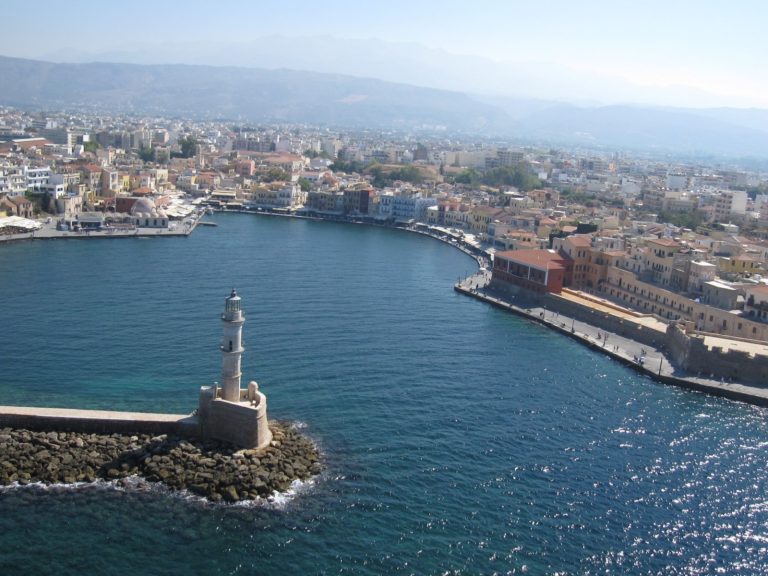Dubbed the “Venice of the East,” Chania’s enchanting beauty holds a revered place as perhaps the most picturesque city in Greece. As the second-largest city in Crete, boasting a population exceeding 60,000, Chania stands as a testament to the resilience of historical preservation against the tide of modernization that swept through other Cretan cities.
A Legacy Preserved
Unlike Heraklion, where Venetian and Ottoman landmarks fell prey to economic progress, Chania’s Old Town and Venetian Harbour have been meticulously preserved. This careful preservation has endowed the city with a unique Venetian allure rare in the Mediterranean. Visitors to Chania are captivated by the quaint narrow streets, the majestic lighthouse guarding the harbor’s entrance, and the multitude of historic monuments that contribute to the city’s otherworldly charm.
Historical Bedrock
Chania is believed to stand on the ancient grounds of Minoan Kydonia, a fact underscored by archaeological findings on Kastelli Hill. The city flourished during the Byzantine era, fortified to withstand the tests of time. The Venetians further transformed Chania, erecting formidable walls that encapsulated the city in a grand castle.
A Capital Through Time
The city’s prominence was further elevated when Sultan Abdul Mezit chose the gulf of Souda as the site for a naval base in 1850, shifting Crete’s capital from Heraklion to Chania until 1971. This period witnessed the construction of significant buildings, particularly in the suburb of Halepa, marking a golden era in Chania’s architectural and cultural development.
A Beacon of Freedom
The city’s illustrious history reached a zenith with the hoisting of the Greek flag at Firkas fortress in 1913, heralding the unification of Crete with Greece after centuries of occupation. Chania also played a pivotal role during World War II, particularly in the Battle of Crete, where the airport of Maleme became a focal point of resistance against German forces. It was among the last European cities to be freed from German occupation in April 1945.
Chania Today
Today, Chania remains a jewel in Crete’s crown, attracting visitors from around the globe with its blend of historical magnificence and natural beauty. From its bustling Venetian harbour, lined with cafes and shops, to the serene beaches that stretch beyond the city limits, Chania offers a slice of paradise for every traveler. The city’s vibrant marketplaces, historical museums, and the evocative streets of the Old Town invite exploration and discovery.
As I wandered through Chania, from the labyrinthine alleys of its Old Town to the serene waters of its Venetian Harbour, I was struck by the city’s ability to transport its visitors to a bygone era while still pulsating with the vibrancy of modern life. Chania, with its storied past and dynamic present, stands as a beacon of cultural heritage and natural splendor, truly earning its moniker as the “Venice of the East.”
Sorry, no records were found. Please adjust your search criteria and try again.
Sorry, unable to load the Maps API.
